In the past year, and with only two films, Dustin Guy Defa has firmly cemented himself as one of American independent cinema’s strongest new voices. Premiering at the 2011 SXSW Film Festival and featuring a star-making performance by Kentucker Audley, his narrative feature Bad Fever is firmly rooted in the character- and atmosphere-based dramas churned out by the New Hollywood movement in the 1970s. Months later, Defa unleashed a tour-de-force of a 10-minute documentary, Family Nightmare, in which he revisited the ghosts of his past in a truly devastating way. Just after screening Family Nightmare at the 2012 Sundance Film Festival, and just before the theatrical release of Bad Fever at the reRun Gastropub in New York City (on February 3, 2012), I sat down with Defa to discuss his coming to terms with the uncomfortable experience of making Family Nightmare, the birth of Bad Fever, and the revelation that is the performance of Kentucker Audley.
Hammer To Nail: How did Sundance go for you?
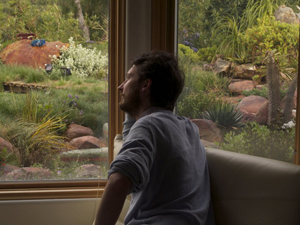 Dustin Guy Defa: It couldn’t have gone better, I had an amazing time. Q&A’s were amazing. I showed my whole family the movie before the festival, and that was very intense. I’d already shown a couple people, but the Tuesday night before the festival, I showed everybody, in one room.
Dustin Guy Defa: It couldn’t have gone better, I had an amazing time. Q&A’s were amazing. I showed my whole family the movie before the festival, and that was very intense. I’d already shown a couple people, but the Tuesday night before the festival, I showed everybody, in one room.
H2N: Whoa.
DGD: And for the most part, it’s been beautiful and wonderful. It’s actually opening up a conversation with my family that wasn’t there before. And, yeah, the audience’s responses were great, we got lots of questions. Man, that festival was a whirlwind. I’m still recovering. Holy moly!
H2N: Okay, enough about that. Let’s move on to the feature film in your other back pocket! I rewatched it last night, and once again, the performances just blew me away. Specifically Kentucker [Audley] as Eddie. Was this part written for Kentucker?
DGD: The script came first. I basically wrote the script in December ‘08/January ’09, and I actually didn’t know who was gonna play the characters. Originally, the character that Elèonore plays was younger. And I didn’t find Kentucker until… I think it was like June. It was a long search. I couldn’t find anybody. There were lots of ups and downs.
H2N: And were you playing the traditional casting game?
DGD: No. Just all by myself. I rented Team Picture, watched it, and even though he’s so different, there was something about him that seemed right on. His uncomfortableness, especially with his family in Team Picture. And I thought, “Okay, maybe this is the guy.” I wasn’t sure, but I just had this feeling. And he happened to be in New York—he lives in Memphis but he happened to be in New York—when I emailed him the next day. We went to lunch. He said no. [H2N laughs] He was not interested in being an actor at all, and he also wasn’t interested in any movies that are not [seeped in] realism. He originally said no, and he also said that he just didn’t think he had the range to pull off something like that. And then like two weeks later, out of the blue, he said, “Oh, are you still thinking that maybe I could do it?” I was like, “Yeah,” and he said yes.
H2N: What had happened to make him change his mind?
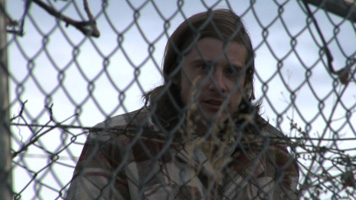 DGD: He had had long conversations with his friends, and they were pushing him to do it, said why not, so thankfully he did it.
DGD: He had had long conversations with his friends, and they were pushing him to do it, said why not, so thankfully he did it.
H2N: And with this and Sun Don’t Shine, it’s like, “Dude, you can’t deny it.”
DGD: You’ve seen Sun Don’t Shine? I can’t wait.
H2N: I saw the most up-to-date rough cut at the American Film Festival in Poland. He’s a movie star whether he wants to be or not.
DGD: That’s how we all felt. It was a big discovery when we were shooting. I mean, it was a big surprise, and a revelation, watching him work. I think for him too, it was a revelation in a way. He discovered that he’s a born actor.
H2N: When did you first see this character come to life for the first time and think, “Oh God yes.”
DGD: The glimpse of the character was just some tapes he sent me. He sent me tapes of him doing the routine. And all of them were very different. And there was one in particular that seemed on the right track, so I said yes to that one. But it was just a glimpse; it wasn’t actually what happened. And then when he got to Salt Lake City, where we shot, we had three days of rehearsal—none with Elèonore, though, which was unfortunate—mostly with the mother. There were glimpses but it was still a mystery as to how he was going to pull it off. Actually, the first day of shooting it still wasn’t there. And starting around the second day of shooting, the third day of shooting, we both started realizing the character, seeing the character, who he was and how he acted. So it was a discovery process.
H2N: Did you need to go back and reshoot those first few unsure days?
DGD: No. When I shoot, I’m very careful about the schedule, and I make sure that the first two days are very light and easy. We ended up using that stuff, but it was stuff like him walking or maybe saying a couple lines.
H2N: How about Elèonore? She’s another one who just jumps out in this circle of familiar faces you encounter in these festival films. From the first time I saw her in The Pleasure of Being Robbed, I just knew that I was watching a real actor.
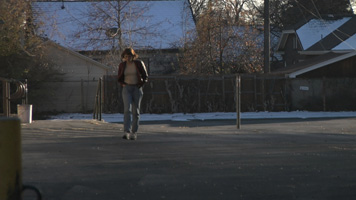 DGD: Ever since The Pleasure of Being Robbed I’ve been in love with her on film. Like I said, in the script it was a younger character. And I was kind of thinking, “Oh man, how can I find a younger Elèonore, where is she?” And that was before I found Kentucker. And when I found Kentucker—originally I was gonna have Eddie be older, he was gonna be like 40, to make an even bigger age difference—once I found him, I thought, “Oh, the two of them will work.” So I just asked her. She read the script and was drawn to it and said yes. And I was excited ‘cause I love watching her on screen, in anything.
DGD: Ever since The Pleasure of Being Robbed I’ve been in love with her on film. Like I said, in the script it was a younger character. And I was kind of thinking, “Oh man, how can I find a younger Elèonore, where is she?” And that was before I found Kentucker. And when I found Kentucker—originally I was gonna have Eddie be older, he was gonna be like 40, to make an even bigger age difference—once I found him, I thought, “Oh, the two of them will work.” So I just asked her. She read the script and was drawn to it and said yes. And I was excited ‘cause I love watching her on screen, in anything.
H2N: The other thing is that she has an aged voice and I actually don’t even know how old she really is! Which makes her land in this weird space where she can be both older and younger at the same time. In this case, I don’t know how old the character of Irene is supposed to be, but that didn’t matter to me at all. So, you said they didn’t have rehearsal time together?
DGD: I think we did rehearse. We shot for a week, and then we had a day off. Elèonore had arrived the night before. I feel like we did rehearse, possibly that day. I know we went on a hike, and that was almost like a rehearsal, just getting to know each other, ‘cause they had never met until then. So she had to catch up a little bit. But she was actually shocked at what he was doing. She was really surprised. She had no idea he was going to be acting that way. [H2N laughs] She had to completely adjust what she was doing. It was a big surprise to her. But she also realized what he was doing so wonderful, so she immediately adjusted. I remember the first day we shot with her, it was the very first gas station scene, and immediately everything was great and wonderful. And the moment we stopped shooting, a giant comet—everything lit up like it was daytime for one second, there was a bright streak across the sky, I’d never seen anything like it—that was beautiful. It felt like a good omen.
H2N: Backtracking to the kernel of the idea, the film feels very personal to me, but the story and characters are clearly very fictitious inventions. Where did this idea come from?
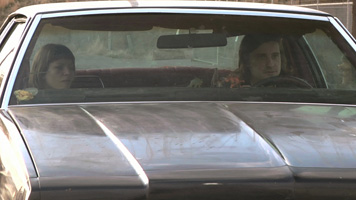 DGD: The idea definitely stems from high school. I moved from Salt Lake City to southern Oregon—a tiny town called Grant’s Pass—for high school, then I went back to Utah. But the moving and not having friends situation when I got into high school was horrible. I had the worst first three years of high school, it was horrible. And basically the thing that opened me up and earned me friends was speech. I got into speech. I was doing something called “after dinner speaking,” which is comedy; it’s just like stand-up, except there’s more of a thesis to what you say, it’s seven minutes. And that opened me up and I became a little bit more open to talking to people and I made friends because people thought I was funny. And I’ve always wanted to be funny, because my family was centered around laughing and saying jokes to each other, even though maybe they’re not funny. So I always wanted to be funny. And then suddenly it seemed like I was kinda popular in school for being funny. But just those first three years of high school were so agonizing, I couldn’t actually even talk to people. People would ask me questions and I couldn’t even talk to them. But the wanting, and then discovering this performance aspect, I think [Bad Fever] comes from that. But obviously, Eddie is an extreme version of that person I was—and still am. I’m still inhibited. I’ve always thought stand-up comedy was the best thing. I used to want to be a stand-up comic, but I’m always too scared to. I think Eddie is just me if nobody had ever accepted me. If I had tried to do the speech and be funny and nobody thought it was funny? I think I would have just gone into my head. With Eddie, he’s so distant from reality that his ideas of jokes are so… I think they’re poetic and beautiful and funny… but in terms of society or the people who would actually go to a comedy club to watch an act, he’s so unfunny, it’s horrible.
DGD: The idea definitely stems from high school. I moved from Salt Lake City to southern Oregon—a tiny town called Grant’s Pass—for high school, then I went back to Utah. But the moving and not having friends situation when I got into high school was horrible. I had the worst first three years of high school, it was horrible. And basically the thing that opened me up and earned me friends was speech. I got into speech. I was doing something called “after dinner speaking,” which is comedy; it’s just like stand-up, except there’s more of a thesis to what you say, it’s seven minutes. And that opened me up and I became a little bit more open to talking to people and I made friends because people thought I was funny. And I’ve always wanted to be funny, because my family was centered around laughing and saying jokes to each other, even though maybe they’re not funny. So I always wanted to be funny. And then suddenly it seemed like I was kinda popular in school for being funny. But just those first three years of high school were so agonizing, I couldn’t actually even talk to people. People would ask me questions and I couldn’t even talk to them. But the wanting, and then discovering this performance aspect, I think [Bad Fever] comes from that. But obviously, Eddie is an extreme version of that person I was—and still am. I’m still inhibited. I’ve always thought stand-up comedy was the best thing. I used to want to be a stand-up comic, but I’m always too scared to. I think Eddie is just me if nobody had ever accepted me. If I had tried to do the speech and be funny and nobody thought it was funny? I think I would have just gone into my head. With Eddie, he’s so distant from reality that his ideas of jokes are so… I think they’re poetic and beautiful and funny… but in terms of society or the people who would actually go to a comedy club to watch an act, he’s so unfunny, it’s horrible.
H2N: When it comes to the jokes you scripted versus Kentucker coming up with his own material, I mean, it seems like he’s tapping into some place within himself that even he doesn’t know where these words are coming from.
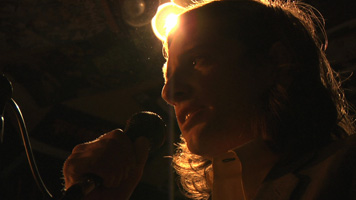 DGD: I had originally written his stand-up. And all the jokes were bad, but purposely bad in a way. But we did think about the jokes. When I did write the script originally, I did write the jokes to be bad. In the movie, I would say 30% of the jokes are actually from the script, but a different version, and then 70% are just his own jokes. But we stopped thinking about if the jokes were bad or good, and what started coming out to us was very funny. We were laughing a lot. I think for the most part I think we were making a comedy, and in a way I think it is a comedy, even though it’s a sad comedy.
DGD: I had originally written his stand-up. And all the jokes were bad, but purposely bad in a way. But we did think about the jokes. When I did write the script originally, I did write the jokes to be bad. In the movie, I would say 30% of the jokes are actually from the script, but a different version, and then 70% are just his own jokes. But we stopped thinking about if the jokes were bad or good, and what started coming out to us was very funny. We were laughing a lot. I think for the most part I think we were making a comedy, and in a way I think it is a comedy, even though it’s a sad comedy.
To me, what he was doing was like jazz. I don’t think he knew what was coming out of him either when we’d do takes. The takes were all very free, in a way, for dialogue. So he would just be riffing off topics and other jokes, and I don’t know if he knew what was coming out of him, but it would always be a surprise.
H2N: And does that make the edit more fun, or difficult, since you likely have a ton of nuggets to choose from?
DGD: Well, we had a lot of footage—we always had two cameras—so we did definitely pull stuff out of all different takes. I know David Lowery, who edited the movie, thought there was so much material, and one of his goals was to parse it down, to get the gems. But there are still so many… I mean, I would say almost every take, actually, any take with Kentucker, in any scene, is worthwhile. I would say there was hardly ever an off moment, or off note, with him in a scene. [H2N laughs]
H2N: Are you going to share this with the world in any way on the DVD, I hope?
DGD: Yeah. I have a couple deleted scenes that are really awesome and were really hard to take out. I think we had like three or four.
H2N: And what determined that? Because the movie is 77 minutes long, which I’m personally all for, but that number still does allow for some breathing room to even get it to 80 or something if you had wanted to.
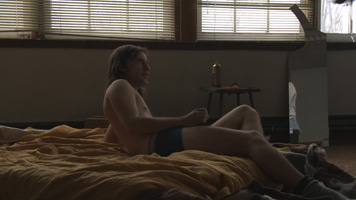 DGD: It really was a dialogue of “how necessary is this?” And we only kept what was completely necessary. Even though I was in love with other scenes, they seemed to slow down the momentum of where we were trying to get to. And those other scenes are really brilliant and I really love them—there’s another of Eddie and Irene walking in a park throwing snowballs, and there’s a scene where Eddie goes into a pawn shop and tries to get a wedding ring, but it’s too expensive, he can’t find any where the price is right. [both laugh]
DGD: It really was a dialogue of “how necessary is this?” And we only kept what was completely necessary. Even though I was in love with other scenes, they seemed to slow down the momentum of where we were trying to get to. And those other scenes are really brilliant and I really love them—there’s another of Eddie and Irene walking in a park throwing snowballs, and there’s a scene where Eddie goes into a pawn shop and tries to get a wedding ring, but it’s too expensive, he can’t find any where the price is right. [both laugh]
H2N: At what point did you picture lock? Was it based on getting into SXSW? Or did you come to terms with that scary decision on your own?
DGD: We actually locked before getting into South by Southwest, I think a month before we locked. It was very hard to get to that place. It was almost a year before locking, even though it ends up being such a simple movie. ‘Cause I was originally gonna edit the movie. And then I did a rough cut and that was a horrible, horrible cut. Then I did another rough cut thinking I would find an editor, and that’s when I started talking to Lowery. I showed him the cut and he fell in love with it, but he started from scratch also. So we shot in November of ’09, and by the time he had edited a cut that I saw, I think it was June ’10. And then we locked in October.
H2N: How about the added textural element of VHS, with this and Family Nightmare. Was that something written into the script all along?
DGD: Oh yeah.
H2N: And was it there to make the visual aesthetic more dynamic or was it important to you in a story sense as well?
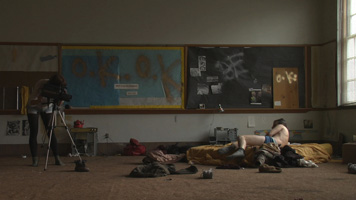 DGD: VHS was not specifically a storyline element. We easily could have used a more modern personal camera. But in terms of it just being VHS, I’m so attracted to that aesthetic. It’s so interesting that it’s coming around in a weird way. It used to be ugly and now it’s beautiful. And I don’t know if it’s just because of our childhood or what, but I’m just so attracted to that aesthetic. I find it to be so painterly and gorgeous and artistic in a strange, weird way. But I don’t know what it would be like if you shot something else. There’s something almost haunting about VHS and I don’t know why that is. Even with Trash Humpers.
DGD: VHS was not specifically a storyline element. We easily could have used a more modern personal camera. But in terms of it just being VHS, I’m so attracted to that aesthetic. It’s so interesting that it’s coming around in a weird way. It used to be ugly and now it’s beautiful. And I don’t know if it’s just because of our childhood or what, but I’m just so attracted to that aesthetic. I find it to be so painterly and gorgeous and artistic in a strange, weird way. But I don’t know what it would be like if you shot something else. There’s something almost haunting about VHS and I don’t know why that is. Even with Trash Humpers.
H2N: There is a sense that something bad is gonna happen!
DGD: Maybe it’s just voyeuristic.
H2N: I think that’s it right there. VHS implies that you’re watching family home video, and when it’s not your family home video there’s automatically an air of feeling like a peeping tom, or that you’re watching something you have no business to be watching.
DGD: Yeah.
H2N: It looked very clearly to me like you were rolling VHS along with your primary camera(s), especially in that one shot when Eddie gets up off the bed and it cuts from Irene’s VHS camera to your movie camera. Was that, in fact, how you approached the filming?
DGD: We actually did it simultaneously with all those scenes. But in that middle section where it’s just VHS—when they’re in the bathroom and when he’s in the gym with the broom—we shot all of that stuff on our cameras also, but we just used the VHS footage. We were shooting simultaneously with all cameras.
H2N: So now, you’re getting an NYC release, which means legitimate reviews, and you’re partnering with Factory 25, which means a home video release, but are you going to try to book as many theatrical dates as possible, or are you looking at this week as a make-peace-with-the-movie homecoming?
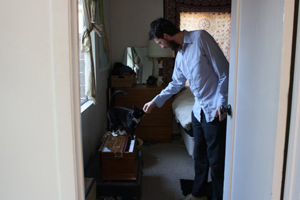 DGD: Well it’s certainly a great homecoming feeling. It’s awesome to just play New York. There is talk of more theatrical—I know it’s hard—with one or two spots of week-long runs, but for the most part one or two nights in different cities.
DGD: Well it’s certainly a great homecoming feeling. It’s awesome to just play New York. There is talk of more theatrical—I know it’s hard—with one or two spots of week-long runs, but for the most part one or two nights in different cities.
H2N: I know we discussed Family Nightmare right after you first premiered it at BAMcinemaFEST and you were much more timid about what to do with it, but are you now thinking about getting that film into the world as well or are you still figuring it out?
DGD: Still figuring it out. I’m really open now that I’ve shown it to my family and everybody seems to be supportive, I’m looking to figure out how to do that. It’s interesting with short films, I don’t know how distribution works. But with Family Nightmare, we’re going to more festivals—I can’t say which right now—and I am talking to a distributor, but I don’t know what the plan is. I’m hoping to find out soon.
H2N: Lastly, we’re coming up on the year anniversary of Bad Fever’s world premiere, and Family Nightmare has also been in the mix for a bit, do you have the itch—or should I say the BURN—to hit the ground running on your next project?
DGD: Yes. It’s hard to even live life without shooting something.
— Michael Tully








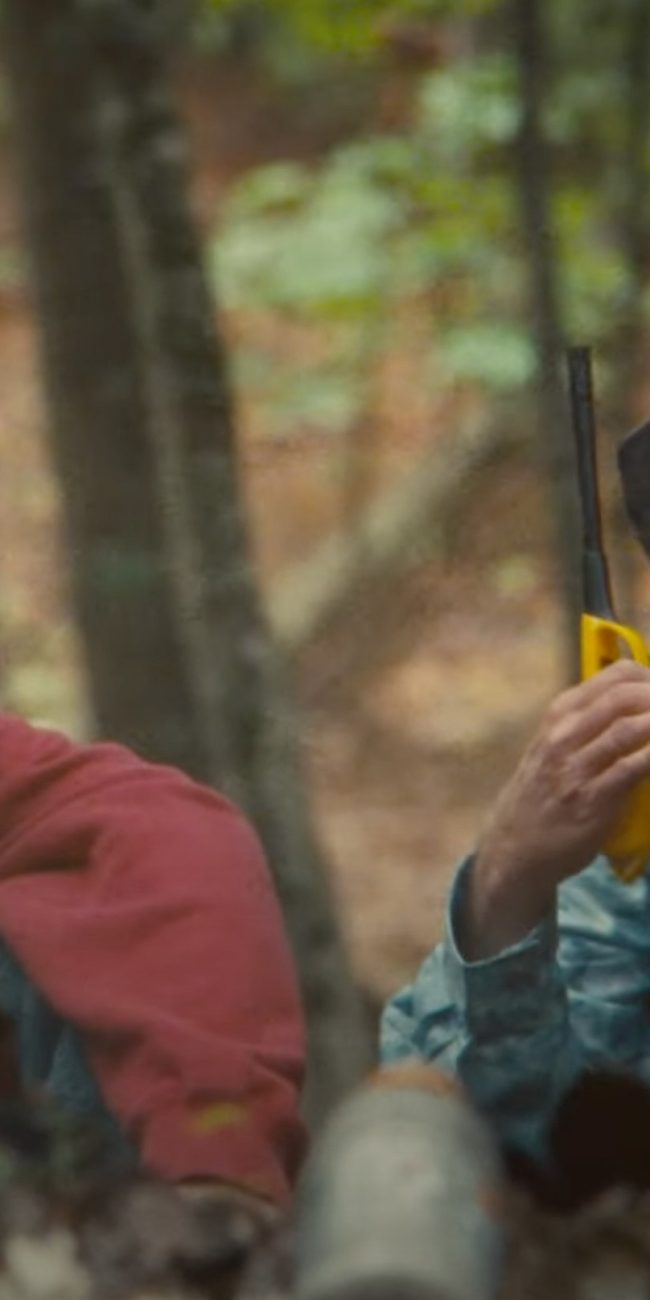
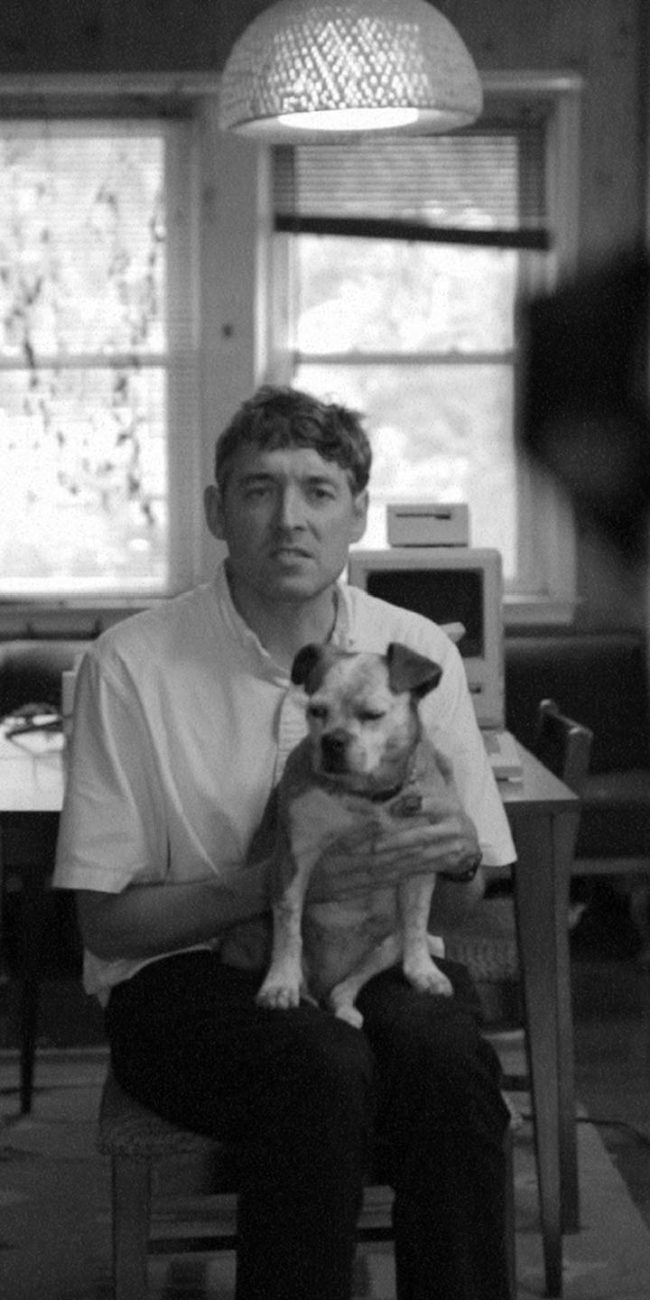


Pingback: THE 2012 HAMMER TO NAIL AWARDS – Hammer to Nail